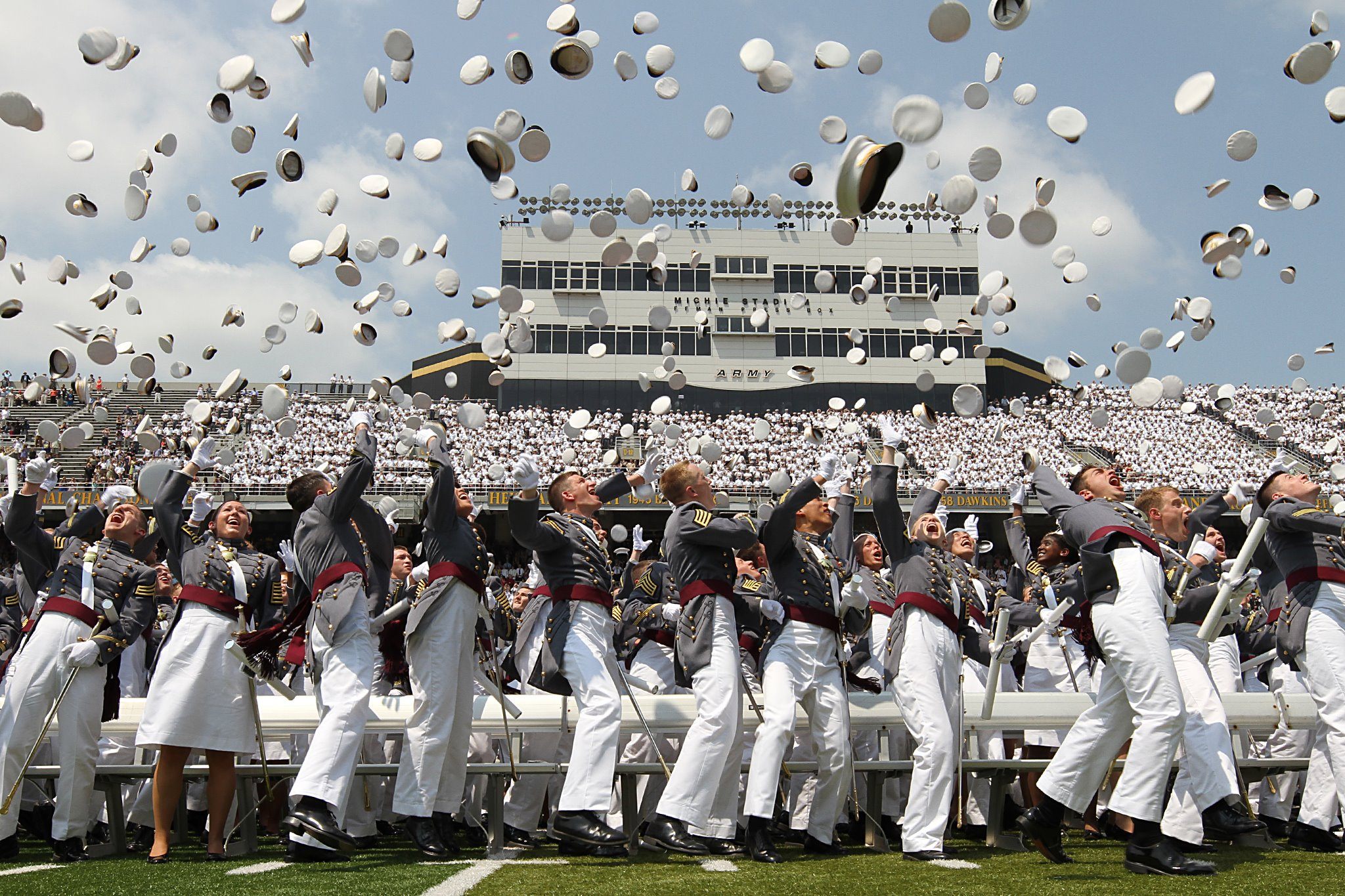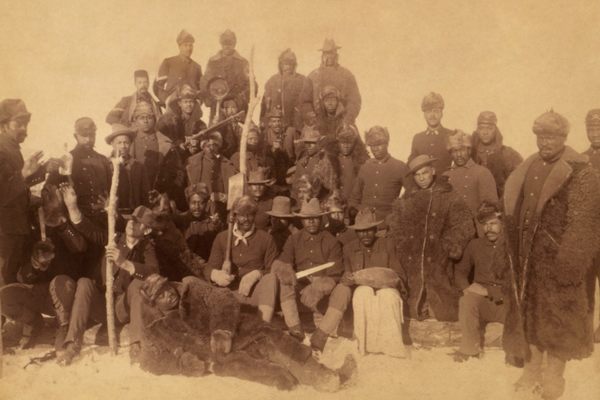Is a Raised Fist a Political Gesture, Or a Celebratory One?
The history of the hand movement shows a multiplicity of meanings

Class of 2012 cadets from the United States Military Academy at West Point toss their hats. (Photo: US Army/CC BY-2.0)
This week, the New York Times reported that a group of black women about to graduate from the famed U.S. Military Academy at West Point are facing investigation from school officials over a group photo. The picture is one of many taken by students over the years as part of a tradition of “Old Corps” photographs staged to mimic historical cadet portraits. It would be an insignificant personal memento, according to the Times, but for “one key difference: The 16 women raised their clenched fists.”
Black women could be punished at West Point Military Academy - for raising their fists? https://t.co/4Eh39uJGcw pic.twitter.com/xCa51wfqji
— Brent Staples (@BrentNYT) May 7, 2016
The salute has set off controversy as the photo spread on social media, with some claiming the pose is an inappropriate political gesture—West Point prohibits public displays of politics from students and staff—and others arguing the pose simply reflected the women’s sense of accomplishment.
The raised fist gesture is associated with numerous political movements, and it can’t be tied to any one ideology or message. In a 2012 post on The Lede blog, the New York Times detailed some of the many movements that have adopted the gesture. Along with the civil rights groups many Americans most readily associate the imagery with, anti-Franco groups in Spain, leftists in Europe, and even white supremacists have used the salute; the Times itself was prompted to examine the salute’s history after Norwegian mass murderer Anders Breivik, known for his extreme far-right views, used it during his trial. A 2006 post on the website for design association AIGA traces the salute’s origins back to revolutionary movements in 19th century France, particularly via Romantic paintings depicting revolution events.
The fist has also been repurposed for wholly apolitical purposes, with AIGA noting its use in an ad campaign for Howard Stern’s radio show. Most recently, pop superstar Beyoncé incorporated the raised fist into her 2016 Super Bowl halftime performance, triggering similar backlash.
The cadets’ supporters argue that the more apolitical use of the salute—supporter Mary Tobin described the fist to the Times as “a sign that means unity and pride and sisterhood”—was the motivation behind the photograph in question; if that’s the case, it wouldn’t be the first time the U.S. military has mistakenly ascribed political motives to innocuous gestures. In 2014, artist and photographer LaMont Hill wrote for the Smithsonian Institution’s Center for Folklife and Cultural Heritage about the history of “the dap,” a handshake developed by black GIs during the Vietnam War as an expression of solidarity. Hill explains that the gesture arose from the racial tensions within the military at the time, which included reports of white soldiers shooting black soldiers during combat, writing:
Such events, combined with the racism and segregation faced by black G.I.s, created a pressing need for an act and symbol of unity. The dap, an acronym for “dignity and pride” whose movements translate to “I’m not above you, you’re not above me, we’re side by side, we’re together,” provided just this symbol of solidarity and served as a substitute for the Black Power salute prohibited by the military.
As the dap’s popularity grew, white military officials mistakenly interpreted the gesture as “a coded language of potential black insurrection,” and promptly banned it at all levels, disciplining and even discharging black soldiers for dapping. A report produced by the Department of Defense’s Task Force on the Administration of Military Justice noted that “dapping has become a source of great friction both between the black serviceman and his white counterparts and between him and the military system.” At the same time, when black soldiers requested the banning of Confederate flags and punishment for those who displayed them, the requests fell on deaf ears, according to accounts in Fighting on Two Fronts: African Americans and the Vietnam War. Confederate flags were ultimately banned, but the rule was rarely enforced, with the flag even being paraded in front of troops during a Christmas USO show.
While it remains to be seen what punishment the cadets will face, if any, it should be noted that they certainly have reason to be proud. The Times points out that the 16 photographed cadets represent nearly all of the black women graduating from West Point this year—out of a class of about 1000, 17 (1.7%) are black women. And as Mary Tobin pointed out to the Times, graduating from the highly-regarded military academy means that they have done “what only a few people, male or female, have ever done in this country.”












Follow us on Twitter to get the latest on the world's hidden wonders.
Like us on Facebook to get the latest on the world's hidden wonders.
Follow us on Twitter Like us on Facebook